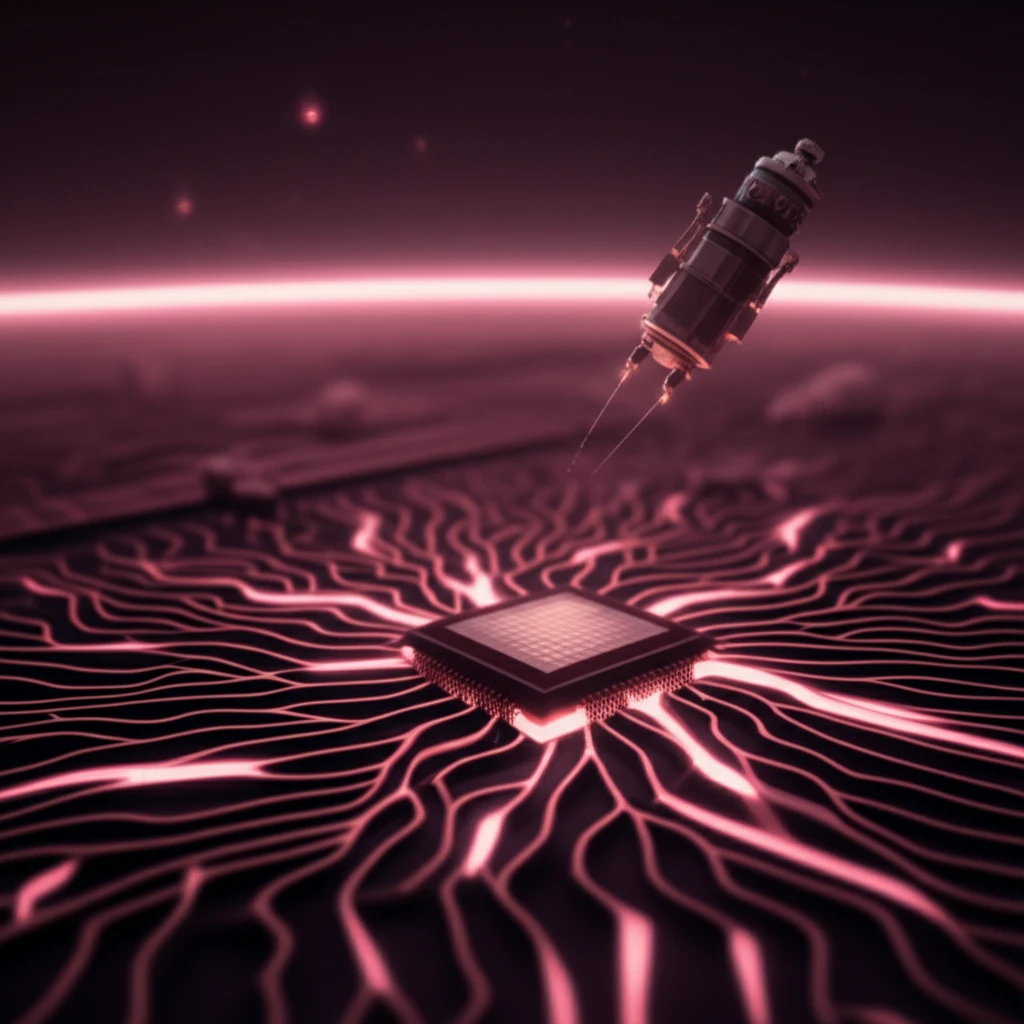
Miniature Flows, Major Impact: How Tiny Channels are Revolutionizing Tech
"Unlocking the secrets of slug-bubble regimes in microchannels with infrared sensors could transform micro-thrusters and more."
In industries ranging from nuclear reactors to micro-chemical propulsion systems, the behavior of gas-liquid two-phase flow in capillary systems is critical. Understanding the liquid film thickness in different flow regimes, especially slug and bubble flows, is essential for optimizing system performance. Imagine designing a micro-thruster for a satellite – precise control over the propellant mixture is key to generating the exact thrust needed.
Traditional methods for studying these flows can be complex and intrusive. However, recent research has explored the use of infrared (IR) sensors as a non-invasive tool to characterize these flow regimes. This approach offers a way to 'see' inside these tiny channels and understand how the fluids are behaving without disturbing them.
This article delves into a study that uses an IR sensor to investigate slug-bubble train flow (alternating slugs of liquid and bubbles of gas) inside a small square channel. We'll explore how the sensor works, what the researchers discovered, and the potential implications of this technology for various fields.
Decoding Slug-Bubble Flow with Infrared Sensors: How Does it Work?

The research focuses on experimentally and numerically investigating the behavior of an infrared sensor during two-phase flow of a slug-bubble train. The researchers used a square channel with sides of 2 mm and a thickness of 0.5 mm, made of borosilicate glass, to observe the flow. An IR transceiver unit, consisting of an IR transmitter and a photodiode receiver, was positioned perpendicular to the channel.
- The Setup: A mini-channel made of borosilicate glass, an IR transmitter, and a receiver.
- The Process: Infrared light is sent through the channel, and the sensor measures the changes in light intensity.
- The Data: These light variations are then translated into information about the flow of liquid and gas.
The Future of Tiny Flows: Promising Applications and Beyond
The study successfully demonstrated the use of an IR sensor for characterizing slug-bubble train flow in a mini-channel. The experimental and numerical results showed good agreement, confirming the viability of this approach. This opens up exciting possibilities for various applications.
One key area is the development of micro-thrusters for nano-satellites. Precise control over propellant flow is crucial for these devices, and IR sensors could provide the necessary feedback for optimizing thrust. Furthermore, this technology could be applied in microreactors, lab-on-a-chip devices, and other microfluidic systems where understanding and controlling fluid flow is paramount.
While this research represents a significant step forward, there are still avenues to explore. Future work could focus on analyzing the effects of varying liquid film thickness, different flow shapes, and optimizing the IR transceiver design. With further development, this technology has the potential to revolutionize how we study and control fluids at the microscale.
